AMD Drops Bundled Coolers: Your Ultimate 2025 Guide to the Best Ryzen CPU Coolers & Smart Upgrades
AMD’s recent decision to scale back its CPU cooler bundles for several Ryzen 5000, 7000, and 8000 series processors marks a significant shift for PC builders. For years, AMD’s included Wraith coolers offered a decent out-of-the-box solution, especially for budget-conscious gamers. Now, with fewer CPUs shipping with these essential components, the landscape for new and upgrading Ryzen users has changed significantly. This comprehensive guide from JoltGamer is your ultimate resource for navigating this new era. We’ll break down why this change matters, delve into the precise cooling demands of the latest Ryzen processors, and provide data-backed recommendations for the best aftermarket CPU coolers to keep your system frosty and performing at its peak, all while keeping your budget firmly in mind.
The End of an Era: Why AMD’s Cooler Shift Matters
AMD’s Wraith coolers, particularly the Wraith Prism and Wraith Spire, once earned a solid reputation for providing adequate cooling performance for mid-range Ryzen CPUs without necessitating an additional purchase. This made them a favorite among budget PC builders and those seeking a hassle-free experience. However, the company has now confirmed it will discontinue bundling these coolers with certain Ryzen 5000, 7000, and 8000 series CPUs. While this move may streamline AMD’s logistics and subtly encourage the adoption of higher-performance aftermarket solutions, it undeniably places a new onus on consumers to factor in a separate CPU cooler purchase, directly impacting overall build costs and planning from the outset.
The community’s response: ‘I can’t go any higher because of my budget so now I think I will use air cooling to save more money.’ This sentiment highlights a pragmatic shift towards finding affordable aftermarket solutions, underscoring why a budget-focused guide like this is now more essential than ever.
Why Aftermarket Cooling is Now Essential for Ryzen
Modern CPUs from both AMD and Intel, especially the latest generations, generate significant heat under load. While stock coolers were once sufficient for basic tasks, they are increasingly inadequate for keeping high-load CPUs cool during demanding gaming sessions or intensive productivity tasks. This often leads to thermal throttling, a critical issue where the CPU automatically reduces its clock speed to prevent overheating, directly impacting performance and frame rates. An aftermarket cooler is no longer just an upgrade for overclockers; it is a crucial component for ensuring optimal performance, significantly reducing system noise, and maintaining the longevity of your investment. Even AMD’s remaining Wraith Stealth, while marginally better than Intel’s notoriously underperforming stock options, is consistently outperformed by virtually any inexpensive aftermarket cooler available on the market, making an upgrade a clear performance win.
Cooling the New Frontier: AMD Ryzen 2025 Processors & Their Demands
AMD’s CES 2025 announcements introduced a new wave of powerful Ryzen processors, including the flagship Ryzen 9950X3D, the potent 9900X3D, the Ryzen Z2 Series for handhelds, and the Ryzen 9000HX Series for mobile platforms. These chips, featuring advanced ‘Zen 5’ CPU cores and 2nd Gen AMD 3D V-Cache™ technology, are engineered for unprecedented performance. While the 3D V-Cache’s repositioning closer to the cooling solution aims for higher clock speeds at lower temperatures, the sheer power of these CPUs—such as the Ryzen 9950X3D with its 170W TDP—means they can run exceptionally hot if not paired with an adequate cooling solution. For instance, the Ryzen 9 9900X, while capable of running hot, doesn’t strictly necessitate liquid cooling; high-end air coolers often suffice to manage its thermal output effectively. Understanding these specific demands is paramount for choosing the right cooler to unlock their full potential.
Key Considerations for Your Next Ryzen Cooler
- Thermal Performance (TDP Rating): This indicates how much heat (in Watts) the cooler can dissipate. It is critical to match this to your CPU’s TDP, remembering that modern CPUs, especially Intel’s 14th Gen, can frequently exceed their stated base power under load, demanding robust cooling capacity.
- Noise Levels (dBA): A quieter system directly translates to a better, more immersive gaming experience. Prioritize coolers that skillfully balance high performance with low noise output, particularly under heavy load. For reference, anything under 30 dBA is whisper quiet, while 40+ dBA is distinctly audible.
- Size & Compatibility: This is a crucial physical constraint. You must verify that the cooler will fit your PC case and clear your RAM modules. Large air coolers and AIO radiators require meticulous measurement to avoid clearance issues.
- Cooler Type (Air vs. AIO Liquid): Air coolers are generally more budget-friendly and offer greater long-term reliability due to fewer moving parts. AIOs, however, often provide superior thermal efficiency for high-TDP CPUs, better RAM/GPU clearance, and frequently quieter operation (though the pump itself can introduce some noise).
- Aesthetics & RGB: While not performance-critical, the visual appeal of a cooler is a significant factor for many builders. Fortunately, numerous quality coolers now offer customizable RGB lighting to match your build’s theme.
- Value & Budget: Balancing performance with cost is paramount, especially for budget-conscious builds. Our recommendations are carefully selected to prioritize excellent performance for the price, ensuring you get the most cooling for your money.
- Warranty: A robust warranty provides essential peace of mind. Many quality coolers, including those recommended, come with generous 2-6 year warranties, with Arctic notably offering 6 years on some models.
JoltGamer’s Top CPU Cooler Recommendations for AMD Ryzen (2025)
Our selections are based on extensive, rigorous testing methodologies, pushing both All-In-One (AIO) liquid and air coolers to their absolute limits under heavy, sustained use. We meticulously consider a range of critical factors, including raw thermal performance, minimal noise output, aesthetic appeal, and overall value proposition. Through this process, we’ve carefully checked thermal benchmarks and compiled comprehensive specifications to ensure our recommendations not only perform effectively in real-world scenarios but also genuinely enhance your system’s visual and acoustic profile.
Best Overall AIO: Cooler Master MasterLiquid 360 Atmos
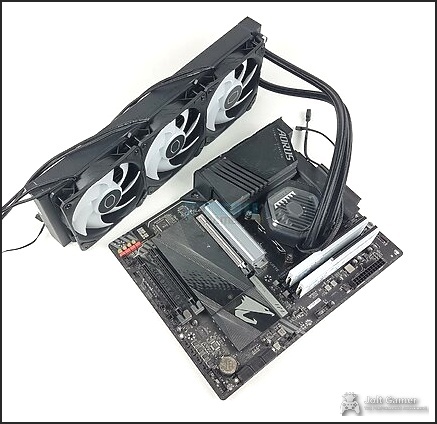
Pros
- Excellent thermal performance, ideal for cooling high-end Ryzen CPUs like the 9950X3D
- Features vibrant, customizable A-RGB lighting with a unique 3D-printable pump cover for personalization
- Offers 100% RAM compatibility, avoiding clearance issues with tall memory modules
- Provides broad socket support, including AM4, AM5, and Intel LGA 1700, ensuring versatility
Cons
- Comes with a premium price point, typical for a high-performance 360mm AIO liquid cooler
Cooler Master MasterLiquid 360 Atmos Specifications
- Radiator Size
- 360mm (394x119x53.2mm)
- Pump Speed
- Max 3200 RPM
- Fans
- 3x SickleFlow Edge 120mm A-RGB
- Airflow
- 70.7 CFM
- Static Pressure
- 3.61 mm H2O
- Noise Level
- 27.2 dBA (at 2500 RPM)
- Socket Support
- Intel (LGA 1700, 1200, 115x), AMD (AM4, AM5)
Best Value AIO: ENERMAX LIQMAXFLO 360mm A-RGB
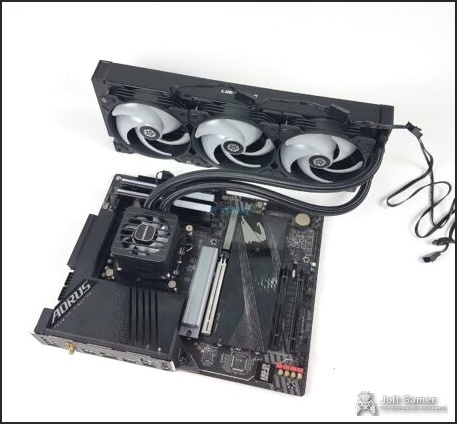
Pros
- Offers exceptional value for a 360mm AIO, making high-end cooling accessible
- Features an integrated VRM fan, actively cooling motherboard components for enhanced stability
- Boasts a thick 38mm radiator, significantly enhancing heat dissipation capabilities
- Maintains quiet operation, rated at just 23.4 dBA at 1800 RPM for a serene system
- Delivers a high 400W TDP rating, indicating robust cooling for even the most demanding CPUs
Cons
- Fan RPMs (1800) are comparatively lower than some competitors, though compensated by the radiator’s impressive thickness and VRM fan for overall performance.
ENERMAX LIQMAXFLO 360mm A-RGB Specifications
- Radiator Size
- 360mm (400x120x64.8mm)
- VRM Fan Speed
- Max 3000 RPM (tied to pump)
- Fans
- 3x 120mm PWM
- Airflow
- 58 CFM
- Static Pressure
- 2.4 mm H2O
- Noise Level
- 23.4 dBA (at 1800 RPM)
- Socket Support
- Intel (LGA 1700, 1200, 115x, 2066, 2011, 2011-3, 1366), AMD (AM4, AM5)
Best Performance AIO: EK Nucleus AIO CR360 Lux D-RGB
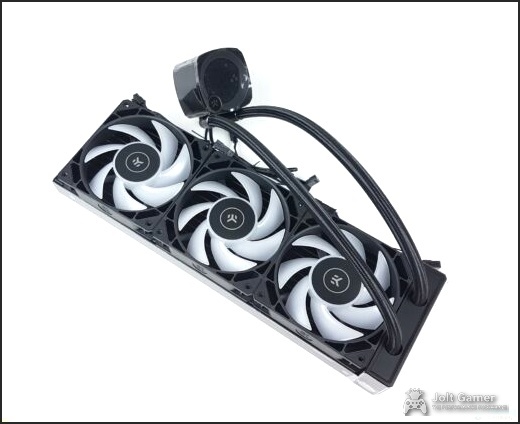
Pros
- Delivers fantastic cooling performance, making it ideal for the most demanding high-end Ryzen CPUs
- Features an innovative design that ensures uncompromised RAM clearance, even with tall modules
- Showcases brilliant digital RGB lighting, offering extensive customization options and visual appeal
- Provides user-friendly installation with practical features like daisy-chainable fans and a rotatable pump top
Cons
- Comes with a slightly higher price point compared to more value-oriented AIO options
- Noise output of 36 dBA can be noticeable at full fan speed, particularly under heavy load
EK Nucleus AIO CR360 Lux D-RGB Specifications
- Radiator Size
- 360mm (400 x 124 x 53 mm)
- Fans
- 3x K-FPT Fan-120ER D-RGB
- Fan Speed
- Max 2300 RPM
- Airflow
- 72 CFM
- Static Pressure
- 2.7 mm H2O
- Noise Level
- 36 dBA
- Socket Support
- Intel (LGA 1700, 115x, 1200, 2011, 2066), AMD (AM4, AM5)
Best Air Cooler: Noctua NH-D15 G2 LBC
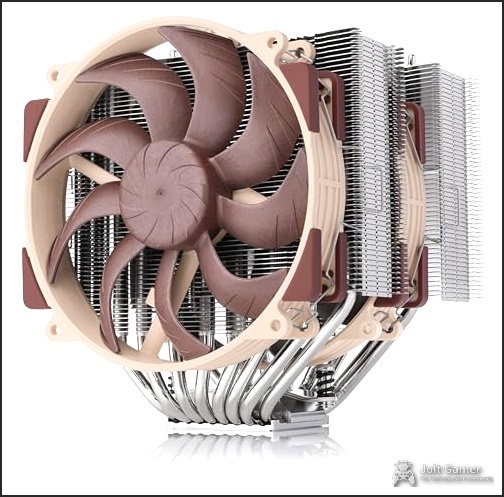
Pros
- Delivers best-in-class air cooling performance, often rivaling many 360mm AIO liquid coolers
- Boasts exceptional build quality and is backed by an industry-leading 6-year warranty for peace of mind
- Renowned for its incredibly quiet operation, maintaining a mere 24.8 dBA even under load
- The specialized LBC version is specifically optimized for AMD AM5/AM4 platforms, ensuring optimal contact and thermal transfer
Cons
- Its substantial size can potentially cause RAM clearance issues and may not fit in smaller PC cases
- Comes with a premium price point for an air cooler, which can be a significant investment
- Lacks RGB lighting, a feature present in many modern coolers (though Chromax.black versions offer a stealthier aesthetic)
Noctua NH-D15 G2 LBC Specifications
- Cooler Type
- Dual-tower air cooler
- Dimensions
- 168 x 150 x 152 mm
- Heat Pipes
- 8
- Fans
- 2x NF-A14x25r G2 PWM
- Fan Speed
- Max 1500 RPM
- Airflow
- 91.5 CFM
- Static Pressure
- 2.56 mm H2O
- Noise Level
- 24.8 dBA
- Socket Support
- Intel (LGA 1851, 1700, 1200, 115x), AMD (AM4, AM5)
Best Budget Air Cooler: Arctic Freezer 36

Pros
- Delivers outstanding performance for its price point, often rivaling more expensive options
- Maintains impressively low noise levels, even when paired with high-end CPUs under load
- Includes an Intel contact frame, crucial for improved performance and preventing chip bending on LGA1700 sockets
- Features tool-free P12 PWM PST fan installation, simplifying the building process
- Offers a simple and straightforward installation process for AMD platforms
Cons
- Intel installation can be fiddly due to the contact frame replacement, requiring careful handling
- Possesses a bare aesthetic by default, though an all-black version is available for a sleeker look
- As a single-tower design, it may not match the extreme overclocking performance of larger dual-tower coolers
Arctic Freezer 36 Specifications
- TDP Rating
- 180W
- Heat Pipes
- 4
- Fans
- 1x 120mm P12 PWM PST
- Cooler Type
- Single-tower air cooler
- Noise Level
- Very Quiet (e.g., 31.8 dBA for Ryzen 7 5800X gaming)
- Warranty
- 6 years
- Socket Support
- Intel (LGA 1700, 1200, 115x), AMD (AM4, AM5)
For an even more aggressive budget, the ID-Cooling SE-214-XT ARGB, often available for around $15, stands as an ultimate budget pick. This air cooler offers appealing ARGB lighting and decent 130W TDP cooling, making it a visually attractive option at its price point. While it provides limited VRM cooling and is noticeably louder than the Arctic Freezer 36 at 37.9 dBA, it represents a significant and worthwhile step up from any stock cooler for mid-range CPUs, delivering effective cooling for moderate heat loads.
Other Strong Contenders & Niche Picks
- Deepcool AK500 Zero Dark / AK620: These are excellent mid-range to high-end air coolers, boasting great aesthetics and strong performance. The AK500 Zero Dark, an evolution of the AK400, can handle up to 240W TDP, while the AK620 is a premium dual-tower option with a comprehensive package.
- Thermalright Peerless Assassin 120 SE ARGB: This is a massive dual-tower air cooler that delivers 200W+ TDP cooling at an incredibly competitive price point. Often dubbed ‘Best Overall’ in budget air cooler roundups, it offers exceptional performance for its cost.
- NZXT Kraken 120: A compact 120mm AIO liquid cooler, the Kraken 120 is ideal for small form factor (SFF) builds where larger air coolers or AIOs simply won’t fit. It provides powerful cooling and an impressively designed holographic CPU block, making it a stylish and efficient choice for tight spaces.
- Noctua NH-P1: For those prioritizing absolute silent PC operation, this unique passive cooler is the only guarantee, as it features no moving parts. It can handle decent gaming processors solely through natural convection, though it remains a niche product best suited for specific builds where maximum performance is secondary to complete silence.
Performance Deep Dive: Benchmarks & Real-World Scenarios
At JoltGamer, our testing methodology is meticulously designed to provide realistic and rigorously vetted CPU cooler benchmarks. We strictly regulate the ambient temperature to a consistent 23C and conduct all tests within a closed case environment (specifically using an MSI Project Zero Z790 motherboard and Pano 100L PZ case). This approach accurately reflects real-world conditions, unlike open-bench setups that can falsely inflate cooler performance by ignoring case heat buildup. Our testbed incorporates an Intel i7-14700K CPU for maximum thermal challenge, and crucially, includes combined CPU + GPU loads (using an ASRock Radeon 7900 GRE, consuming ~275W under full load). This simulates actual gaming scenarios, where CPU-only workloads fail to account for the significant heat contributed by a dedicated graphics card. We measure peak temperatures under sustained, heavy load (e.g., a 30-minute Cinebench R23 run) and real-world gaming temperatures (e.g., a 2-hour Cyberpunk 2077 session), alongside precise noise levels recorded at a one-meter distance using specialized acoustic equipment. This comprehensive approach ensures our data is both accurate and directly relevant to your building decisions.
Installation & Compatibility: Tips for a Smooth Build
Proper installation is just as crucial as choosing the right cooler; even the best cooler will underperform if mounted incorrectly. Always use a Phillips head screwdriver and apply thermal paste correctly—most coolers conveniently come with a tube, or some even have it pre-applied. Common pitfalls to avoid include forgetting to remove the plastic protective film from the coldplate, improper mounting that can lead to irritating vibrations, and aggressive fan curves that generate unnecessary noise. Before purchasing, ensure your chosen cooler clears your RAM modules and fits comfortably within your PC case dimensions. For AIOs, carefully consider radiator placement: top-mounted intake is often ideal, but always check VRM cooling effectiveness if fans are oriented differently.
Pro Tip for AM5 & LGA1700: AMD’s AM5 platform, despite sharing AM4 mounting holes, has a higher heat density, making absolutely good contact crucial for optimal performance. For Intel 13th/14th Gen CPUs (LGA1700), a contact frame is highly recommended to prevent chip bending and ensure a better, firmer contact point, often leading to a measurable 4-6°C improvement in temperatures. Some coolers, like the Arctic Freezer 36, even include one in the box, simplifying the process.
The Budget Builder’s Edge: Smart Cooling Choices for Your $1500 Rig
With AMD phasing out bundled coolers, the budget allocated for your CPU cooler now directly impacts what you can spend on other critical components like your GPU. For a $1500 gaming PC, every dollar counts. Your existing 850W Corsair RX 850 RGB PSU is a huge asset, saving a significant chunk of your budget that would otherwise go towards a new power supply. This allows you to invest more wisely in a CPU and GPU. For example, opting for a strong, value-driven air cooler like the Arctic Freezer 36 or Thermalright Peerless Assassin frees up funds that could push your GPU from an RTX 4060 Ti to a significantly more powerful RX 7700 XT, or even closer to an RTX 4070 Super, offering substantially better gaming performance. Don’t forget to leverage any store credits, like your $100 Mwave credit, to further optimize your spend and maximize your build’s potential!
Future-Proofing Your Ryzen System: AM5 & Beyond
Choosing an AM5 platform for your new Ryzen build offers a significant upgrade path to upcoming Zen 5 processors and beyond, making it a more future-proof investment compared to Intel’s current generation, which is often seen as a ‘dead end’ in terms of socket longevity. Investing in a high-quality cooler now ensures you’re prepared for future CPU upgrades without needing to replace your cooling solution entirely. Many of our recommended coolers, in fact, support both current AM4/AM5 and Intel LGA1700/1851 sockets, offering excellent versatility for potential platform switches down the line and maximizing your initial investment.
Frequently Asked Questions
Do I really need an aftermarket cooler for my new Ryzen CPU?
Yes, for optimal performance, reduced noise, and extended longevity, an aftermarket cooler is highly recommended. Modern Ryzen CPUs, especially the higher-end models, can easily exceed the thermal capabilities of stock coolers under load, leading to performance-damaging thermal throttling.
What’s the difference between air and AIO liquid coolers?
Air coolers use heat pipes and fins to dissipate heat into the surrounding air, which is then moved by fans. AIO liquid coolers, conversely, use a pump to circulate coolant through a cold plate (on the CPU) and a radiator (cooled by fans). Air coolers are generally more affordable and offer greater reliability with fewer moving parts, while AIOs often provide superior thermal performance and better aesthetics for high-TDP CPUs, frequently with quieter overall operation (though the pump itself can contribute some noise).
How often should I replace thermal paste?
Generally, thermal paste should be replaced every 2-3 years to ensure optimal heat transfer. It is also imperative to replace it whenever you remove and reinstall your CPU cooler, as the old paste will no longer provide effective contact.
Are AIO liquid coolers prone to leaks?
While leakages are extremely infrequent with modern AIOs due to advancements in manufacturing and design, it remains a valid concern for some builders. Quality AIOs are engineered for durability, and most come with robust warranties that specifically cover damage in the unlikely event of a leak. Air coolers, having no liquid components, eliminate this risk entirely.
Can I use an AM4 cooler on an AM5 motherboard?
Many AM4 coolers are indeed physically compatible with AM5 motherboards as they share identical mounting hole patterns. However, always check the cooler manufacturer’s specifications for explicit AM5 support, as some may require specific brackets, or their performance characteristics might differ due to AM5’s higher heat density and different IHS design, which demands optimal contact for efficient cooling.
Final Verdict
AMD’s decision to unbundle CPU coolers marks a new, pragmatic chapter for Ryzen PC builders. While it introduces an additional purchase into your build budget, it crucially provides an unparalleled opportunity to choose a cooling solution perfectly tailored to your CPU’s specific needs and your financial constraints. By understanding the rigorous demands of modern Ryzen processors and leveraging the wealth of high-performing aftermarket options now available, you can ensure your gaming rig runs cool, quiet, and performs at its absolute best, maximizing its potential. Whether you opt for a powerful AIO liquid cooler or a value-driven air cooler, making an informed, data-backed choice is the key to unlocking your Ryzen system’s full potential. Don’t just build; build smart with JoltGamer.
Source Attribution
- GamersNexus: GN Mega Charts: CPU Cooler Benchmarks & Comparisons
- Tom’s Hardware: Albert Thomas’s Updated Cooler Testing Methodology
- Techozea.com: 10 Best Budget CPU Coolers 2025: Performance That Won’t Break The Bank
- Accio.com: Best cheap CPU cooler for 2025? Top picks revealed
- Various product reviews and specifications from Cooler Master, ENERMAX, EKWB, Noctua, Arctic, ID-Cooling, Thermalright, Deepcool, and NZXT.
- AMD Press Releases (CES 2025 Gaming Products, Q4 2015 Financial Results – for context only)

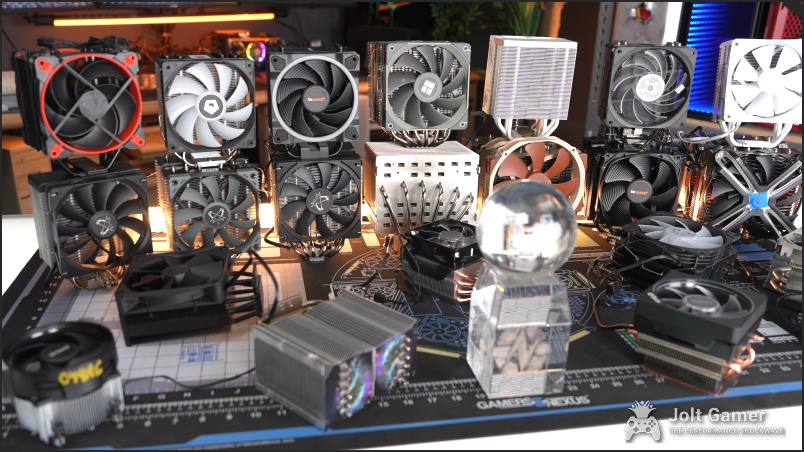

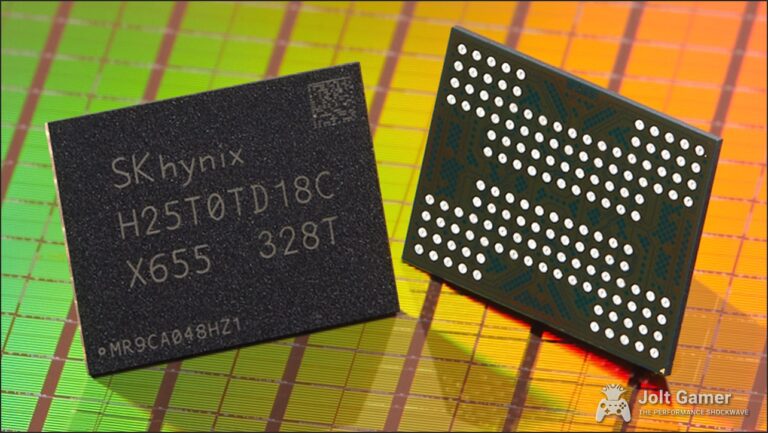
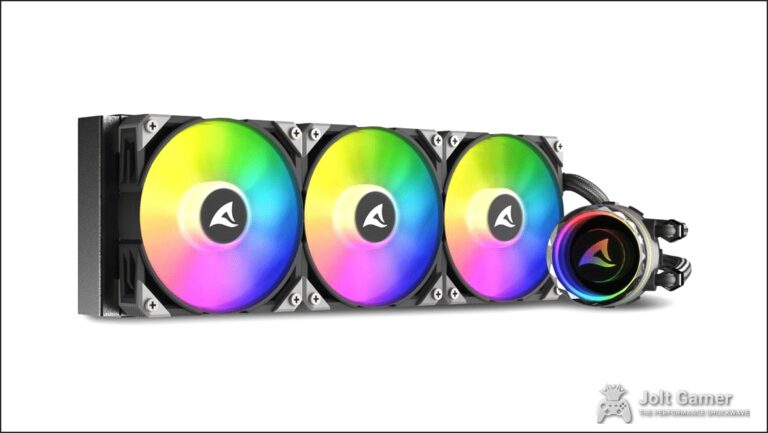
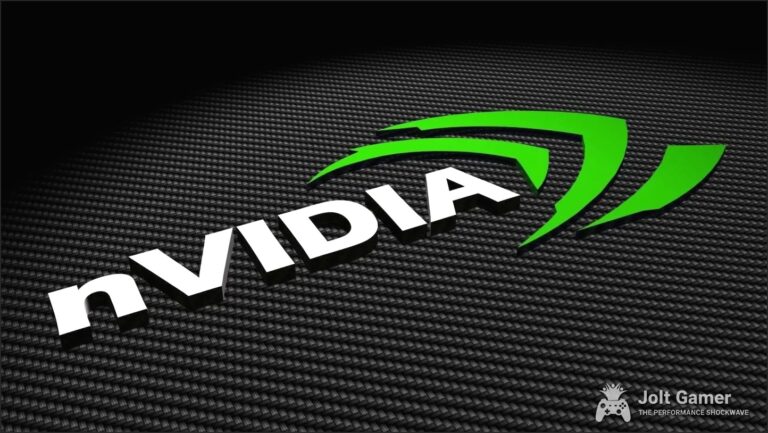
This is an absolutely *thorough* guide, bordering on overengineering for choosing a cooler, especially with those TDP figures! AMD really *is* pushing those Ryzen chips to the limit, practically forcing us to admire their thermal might (and maybe shed a tiny bit of sweat). The detail on testing methods, like the closed case with GPU load, is impressive – finally, a cooler review that reflects real-world gaming truths! While I appreciate the serious breakdown, all this talk about 170W TDPs and 36 dBA noise makes me wish JoltGamer would do a session on *lifestyle cooling* for the rest of us mortals whose main heat source is probably just thinking too hard. Nonetheless, a fantastically detailed and useful read for anyone contemplating the thermal battlefield!
Haha, finally an article that makes me sweat less than my Ryzen 9950X3D does under load! JoltGamer hits the nail on the head – these new CPUs are powerhouses demanding serious cooling wizardry. Forget stock coolers; theyre basically ice cubes in a furnace now. The TDP numbers are just… wild! But fear not, fellow builders, the guide is like a treasure map leading to silence and RGB bliss. Choosing the right cooler is like picking a dance partner – you need the performance (the two-step) and the quiet (the waltz). Whether you go full aio glitz or air cooler grit, getting it right means your rig wont throttle faster than your internet on payday. Just dont forget the thermal paste, or youll be facing thermal throttlingTh… Throttling!